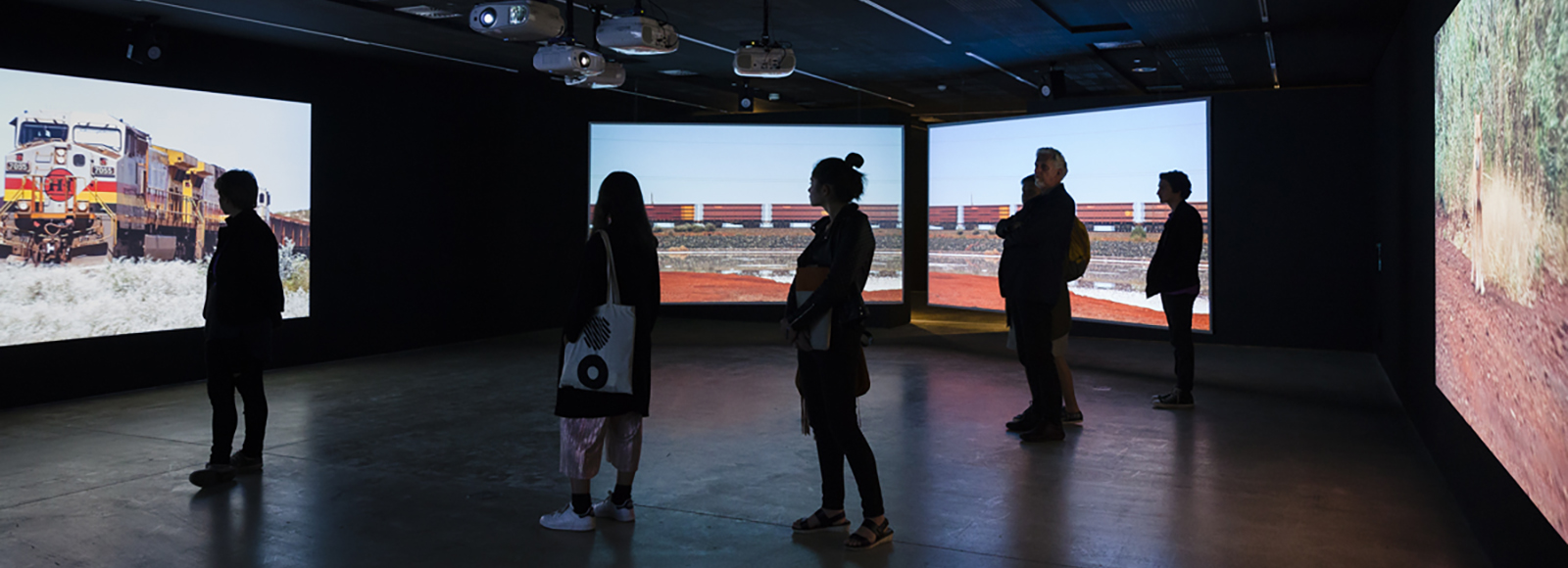
The flows of transnational trade in the global minerals market and the impact of rapid urban development in China are the core subjects of Georgia Wallace-Crabbe’s epic installation – The Earth and the Elements. Now showing in UNSW Galleries as part of Troubled Waters, this five channel video offers a sweeping portrayal of a country and people experiencing an unprecedented transformation. Wallace-Crabbe’s visuals capture the staggering scale of growth across contemporary China, the likes of which has never been witnessed before in the history of humanity.
Wallace-Crabbe’s interest in the dynamics and consequences of development in China, and the relentless pressure to maintain growth, began in 2009 when she produced a 55-minute film called New Beijing – Reinventing a City. This documentary explores Beijing’s bid to become a global economic powerhouse through whole-scale reconstruction of the cityscape and its underpinning economic structures. Featuring interviews with Chinese and international architects and archival footage revealing the complete transformation of the city and its infrastructure, Wallace-Crabbe questioned the costs of growth and demonstrates the impossibility of stopping it. The film was banned at the 2010 Guangzhou Film Festival.
The themes from New Beijing would inspire Wallace-Crabbe to expand her analysis of China’s development. She questioned broadly: Who are the beneficiaries of whole-scale rapid development in China? To what extent do other economies, like Australia, become dependent on exports to the Chinese market? Is it possible to balance economic development in a country as large as China with preservation of natural resources and conservation of the environment?
The Earth and the Elements is the result of Wallace-Crabbe’s five-year study of these questions (which culminated in her PhD). Travelling extensively throughout China, and working with both English and Chinese speaking film crews, Wallace-Crabbe records the inner operations of state of the art car factories, coal and iron ore storage facilities, and the plan for a sprawling 16,411 square kilometre development of a city six times the size of NYC. In and amongst the astonishing visuals of buildings, road systems, and coal-fired power plants, are pictures of people - well dressed and enjoying the paved glamour of a revitalised shopping district.
The Earth and the Elements is mesmerising and transporting. Visually striking and compelling, the narrative explores Australia's and China's commitment and deep co-dependency on mining, export relations, and industrial development regardless of the costs.
Georgia Wallace-Crabbe is an Australian film producer and director responsible for the creation of numerous documentaries, dramas, and television series, including the 1998 Temple on the Hill (directed by Kay Rasool); the 2005 award-winning Jade Babe: A Heighten Life; and in 2007 award-winning New Beijing: Reinventing a City. Wallace-Crabbe’s curatorial work includes the Melbourne International and Sydney World of Women film festivals.
